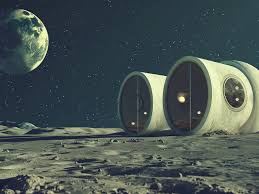NASA, under the direction of acting Administrator Sean Duffy, has unveiled an ambitious initiative to build and launch a 100‑kilowatt nuclear fission reactor on the Moon by 2030. This marks a major inflection point in U.S. lunar strategy emphasizing not only exploration but also sustained infrastructure to support future crewed mission.
Aimed at Establishing a Permanent Lunar Presence
NASA’s directive outlines a clear timeline to:
- Launch the reactor by 2030, coinciding with expected Chinese crewed lunar missions
- Appoint a dedicated program leader and solicit industry proposals within 60 days
- Engage private aerospace firms capable of delivering reactor components to the lunar surface
This shift builds on earlier research under the Fission Surface Power System (FSPS), originally designed for 40 kW output. The new plan doubles that, aligning with broader NASA goals for Artemis and future deep-space infrastructure.
Why Nuclear Power? Solving the Lunar “Night” Challenge
Solar energy struggles during the Moon’s 354-hour-long night cycle. A robust nuclear solution provides continuous power regardless of lighting, temperature, or dust interference. Under the Artemis program and associated base camps, reliable electricity will support:
- Habitat modules, scientific labs, and surface vehicles
- In-situ resource utilization (ISRU) facilities
- Climate-controlled living at lunar outposts
At 100 kW, the reactor could easily exceed the power needs of multiple habitat units, rovers, and support modules.
Strategic Motivation: A Second Space Race
Officials describe the reactor plan not merely as a technical ambition but as a symbol of U.S. resolve in lunar leadership. In internal communications, NASA emphasizes urgency: if China or Russia deploys a reactor first, they could claim a “keep-out zone”, limiting U.S. operations in adjacent territories.
The proposed reactor also dovetails with broader directives to replace the aging International Space Station (ISS) with commercial alternatives by 2030.
Technical Background and Precursor Technologies
NASA’s initial reactor prototype KRUSTY, part of the Kilopower program demonstrated up to 1 kW output using uranium-fueled Stirling engines. By the early 2030s, this reactor is expected to scale to 40 kW. The new initiative leaps beyond that to 100 kW capacity, enabling support for human habitats and expanded utility.
Meanwhile, international players like Rolls-Royce and China are concurrently developing competing micro-reactor designs optimized for lunar deployment.
Challenges and Considerations
- Complex Apollo-scale logistics: Reactor payload delivery, site deployment, and on-site assembly pose significant technical hurdles.
- Regulatory and safety protocols: High-enrichment uranium use in space systems triggers international scrutiny, nuclear oversight, and launch safety review protocols.
- Budgetary constraints: NASA’s broader science missions face cuts, even as funding for human exploration and nuclear tech expands.
- Geopolitical tension: Reactor leadership may carry political weight as portal geopolitics shapes lunar access zones and industrial partnerships.
Looking Ahead: What’s Next
- Wake up calls for industry proposals within 60 days
- Program lead appointment and budgetary procedural updates
- Technology validation for reactor designs capable of long-duration operation
- Projected commercial and international partnerships under Artemis or related frameworks
Why This Matters
This reactor initiative signals NASA’s transition from short-term crewed landings to long-term sustainability on the lunar surface. Energy infrastructure, not propulsive hardware, defines the future of lunar bases, Artemis ambitions, and eventual Mars missions.
If successfully deployed, a working nuclear reactor on the Moon would represent a historic leap in human capability bringing continuous power, reliability, and strategic leverage to America’s return to space.



Comments (0)
No comments yet. Be the first to comment!
Leave a Comment